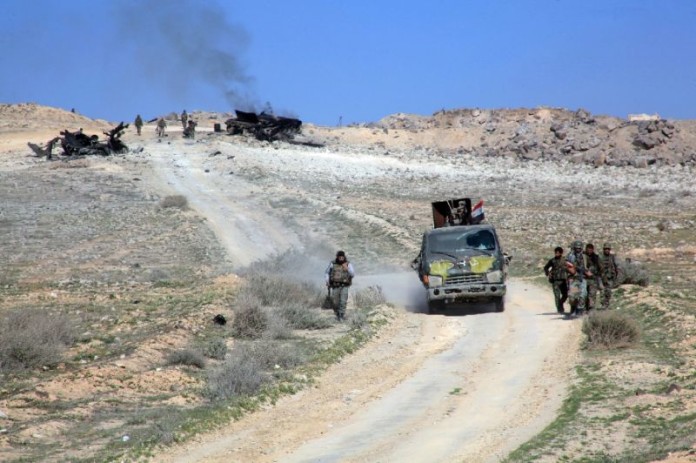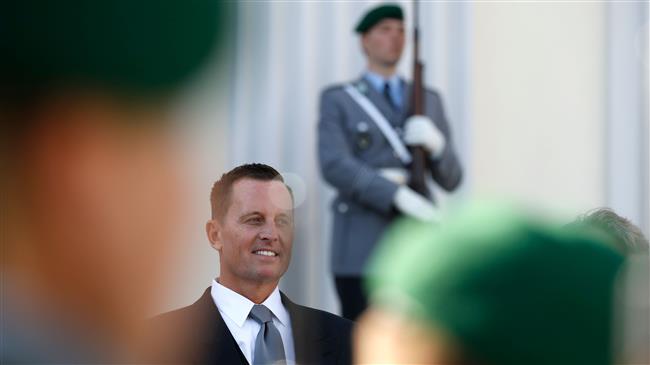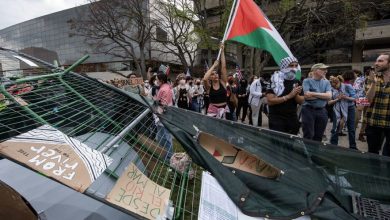Explainer: How Hezbollah drone successfully bypassed the Iron Dome defense system to strike zionist military installation in Haifa
On Sunday evening, Hezbollah, the Lebanese resistance group, executed a significant drone strike targeting an Israeli military training facility for the Golani Brigade located in Binyamina, south of Haifa. The assault resulted in the deaths of at least four soldiers and left over 100 others injured, marking a substantial escalation in the ongoing tensions.

Hezbollah’s deployment of suicide drones successfully traversed Israeli defense systems, covering a distance of over 80 kilometers without being intercepted. The drones reached a military camp situated approximately 55 kilometers from the Lebanese border, 60 kilometers north of Tel Aviv, and 30 kilometers south of Haifa, in territory under Israeli control.
In a continuation of Hezbollah’s Khaybar operations, the Lebanese resistance group has carried out a series of strikes targeting Israeli military and industrial sites. This action comes as a response to what they describe as relentless Israeli assaults on Gaza and Lebanon.
Unverified reports have suggested that the Israeli army’s Chief of Staff, Herzi Halevi, was at the Golani Brigade base at the time it was targeted by a Hezbollah drone. This has led to widespread speculation regarding his location.
Since October 7, 2023, military actions by Israel in the Gaza Strip have resulted in over 42,000 fatalities. Meanwhile, Israeli strikes in Lebanon have led to a death toll exceeding 2,000, according to reports.
In a recent statement from Hezbollah’s operations center, the Lebanese organization announced it had fired multiple rockets targeting areas in Nahariya and Akka. The attack, according to the group, was intended to disrupt “Israeli air defense radars.”
Concurrent with other operations, a new wave of drones—some being utilized for the first time—was launched targeting several sites in Akka and Haifa within the occupied regions.
In a statement following an attack that made headlines globally, it was reported that sophisticated drones successfully evaded Zionist air defense radar systems and reached their intended targets without detection.
A recent drone strike targeted a location where numerous enemy officers and soldiers, including senior-ranking officials, were assembled in preparation for operations against Lebanon. The drones detonated within the rooms where the personnel were gathered.
Hezbollah has announced that the continuous attacks by the Israeli regime have prompted the Lebanese resistance movement to extend its target list. This expanded list now encompasses the city of Haifa and areas further beyond, in addition to Kiryat Shmona, Metulla, and other settlements located near the Lebanese border.
In the aftermath of the Israeli military’s most lethal operation in recent months, Hezbollah has reasserted its cautionary stance. The group identified settler residences utilized as “gathering points for Israeli soldiers” and military installations situated within settlement areas as “targets.”
The resistance movement has claimed that the Israeli military is utilizing residential areas within settlements in northern regions of what they term as occupied Palestine as assembly points for military personnel. Furthermore, they assert that key military bases, which are allegedly orchestrating operations against Lebanon, are situated within settlement neighborhoods in prominent cities such as Haifa, Tiberias, and Acre.
“The Islamic Resistance has identified these houses and military bases as targets for their missile and air forces. The group has issued a warning urging settlers to maintain a safe distance from these military sites until further notice, for their own safety.”
The military operation dealt a significant impact to Israeli forces, resulting in the deaths of at least four soldiers and injuries to more than 100 others. Reports suggest the actual toll may be considerably higher.
Following the attack, the injured were swiftly transported to Hillel Yaffe Medical Center in Hadera for medical treatment. Additional patients were relocated to healthcare facilities in Tel Hashomer, Haifa, Afula, and Netanya.
The Resistance Continues to Make Progress
A comprehensive review of Sunday’s operation indicates that Tel Aviv faced an unexpected setback delivered by Hezbollah, effectively disrupting Israel’s intensified actions against the Axis of Resistance in recent months, as reported by military analysts.
The Israeli military, having faced challenges in meeting its stated “military objectives” in the Gaza Strip, has recently broadened its operations to include airstrikes in Lebanon. The strikes on Beirut have been conducted under the assertion of targeting “Hezbollah headquarters and infrastructure.”
Sunday’s operation showcased Hezbollah’s capability to penetrate Israel’s highly acclaimed Iron Dome defense system, successfully striking its intended target. Analysts suggest this development represents merely the initial phase of a potentially larger strategy.
The assault on the Golani Brigade training camp was among numerous operations executed on Sunday, underscoring Hezbollah’s strategic approach to challenging Israel’s highly regarded Iron Dome defense system.
In a series of coordinated assaults throughout the day, Hezbollah conducted a sophisticated campaign, deploying rockets, drones, and artillery fire targeting Israeli military positions, barracks, and installations. The strikes were directed at locations including Khallet Warda, Al-Labouneh, Hounin, Kfar Kila, Manara, Tsnobar, Zarit, Misgav Am, and Tira Carmel.
The extensive array of targets, alongside the drones’ advanced maneuverability and unpredictable flight trajectories, has significantly challenged the effectiveness of Israel’s Iron Dome and other defense systems.
On the same day, the Islamic Resistance in Iraq carried out two drone attacks targeting key Israeli military installations in the occupied city of Haifa, highlighting the strengthening collaboration within the Axis of Resistance.
In a recent statement, Hezbollah highlighted its operational and intelligence prowess against Israel, whose military strength has frequently been touted. The group disclosed that their assault utilized intelligence acquired through Hudhud drones, focusing on critical Israeli military targets and key infrastructure within occupied Palestinian territories. Among these targets, Hezbollah noted Binyamina, describing it as “a locale unfamiliar to numerous settlers.”
In response to the assassinations of key Hezbollah figures, among them Sayyed Hassan Nasrallah, the recent operation underscored the Lebanese resistance movement’s unwavering commitment to its objectives.
The Binyamina base holds considerable strategic importance for the Israeli government.
In the aftermath of Sunday’s operation, multiple resistance groups have praised Hezbollah for executing a successful strike.
The Ansarallah resistance movement in Yemen has extended its congratulations to Hezbollah following what has been described as a highly complex and strategic military operation. The group lauded the resistance fighters for achieving a significant shift in deterrent strategies and rebalancing power dynamics against Israel.
The Kataeb Hezbollah, an Iraqi resistance group, has reiterated its backing for Lebanon and its resistance efforts, vowing continued support for Hezbollah and Lebanon in opposing Israeli occupation.
In a recent statement, the speaker reaffirmed their unwavering commitment to providing both financial and human resources to support Lebanon, its resistance, and its citizens. They expressed a fervent hope for divine assistance in empowering the fighters within the Axis, particularly Hezbollah’s resistance forces, to undertake further operations aimed at undermining the influence and resolve of the Zionist-American adversaries.
The Palestinian Fatah Al-Intifada Movement characterized the operation as a “powerful and targeted response,” labeling it a significant rebuke to the Israeli administration. Similarly, the Popular Resistance Committees stated that the attack demonstrated the steadfastness and resolve of the Islamic Resistance.
The Gaza-based Mujahideen Movement highlighted the strategic military and security impact of their recent operation, declaring it as a significant setback to Israel’s perceived overconfidence and its security readiness.
The Gaza-based Martyr Abu Ali Mustafa Brigades, the military arm of the Popular Front for the Liberation of Palestine, claimed that their recent operation highlighted the “vulnerability” of the Israeli Defense Forces. They argued that Israel’s reliance on targeted killings and widespread devastation to quell resistance had proven ineffective.
The Syrian Social Nationalist Party has characterized the operation as a strategic component of a continuing deterrence campaign aimed at countering adversaries, specifically in retaliation to Israeli offensives in southern Lebanon, the Bekaa region, and Beirut.




